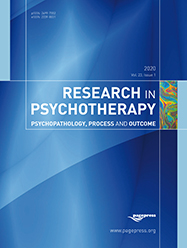Are there gender and age differences in the effect of coping strategies on suicidal ideation among adolescents? The mediating role of emotional intelligence
All claims expressed in this article are solely those of the authors and do not necessarily represent those of their affiliated organizations, or those of the publisher, the editors and the reviewers. Any product that may be evaluated in this article or claim that may be made by its manufacturer is not guaranteed or endorsed by the publisher.
Authors
Studies suggest that coping strategies (CS) and emotional intelligence (EI) can reduce the impact of suicidal ideation (SI) and help prevent adolescent suicide. However, it remains unclear whether EI mediates the relationship between CS and SI, and whether these effects are consistent across gender and age. The objective of this research was to analyze the direct and indirect effects of CS and EI on SI, as well as their invariance across gender and age. An observational, cross-sectional, analytic study was conducted, involving 598 adolescents (M=14.17, SD=2.01). Participants completed the Inventory of Suicide Orientation (ISO)-30, the Trait Meta-Mood Scale (TMMS), and the Coping Strategies Inventory (CSI). Path analysis revealed that CS explained 48% of the variance in EI. CS of emotional expression, social support, and cognitive restructuring showed significant direct effects (p<0.01). Together, CS and EI explained 39% of the variance in SI. The indirect effects of CS on SI through EI were significant (p<.01) for social support, cognitive restructuring, and problem-solving strategies. EI and adaptive CS are relevant in reducing SI. These results have significant implications for the design of clinical and educational interventions aimed at improving emotional regulation and adaptive coping to reduce suicide risk in adolescents.
Supporting Agencies
This study was funded by the Universidad Católica Luis Amigó, Medellín, Colombia [05020299122].How to Cite

This work is licensed under a Creative Commons Attribution-NonCommercial 4.0 International License.






